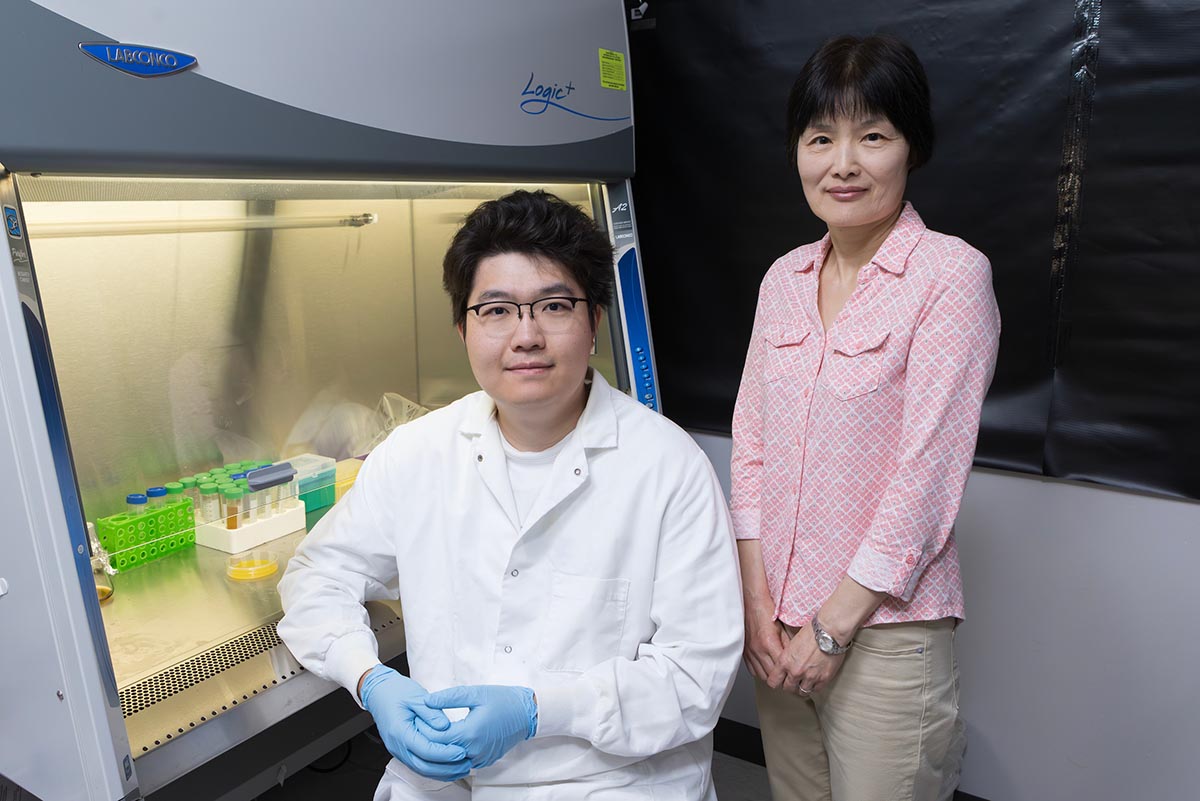According to the U.S. Department of Agriculture, 30% to 40% of the nation's food supply ends up being wasted. That adds up to billions of pounds every year rotting in landfills and emitting greenhouse gases like methane and carbon dioxide.
Plastic is also piling up around the globe, with disintegrating bottles and bags leading to increasing fears about microplastics getting into our water supplies and our bodies.
Imagine if even a fraction of our food waste could be turned into biodegradable plastic - solving two problems and making our planet healthier in the long term.
A team at Binghamton University is doing pioneering research on this idea, and they recently published a paper in the journal Bioresource Technology offering fundamental findings for any company interested in scaling up the process.

Tianzheng Liu, who is receiving his PhD this fall, led the project with faculty support from Professor Sha Jin and SUNY Distinguished Professor and Chair Kaiming Ye from the Thomas J. Watson College of Engineering and Applied Science's Department of Biomedical Engineering.
"Bioresource Technology is a high-quality journal, so being published quickly speaks to the importance of this research," Jin said. "The reviewers commented that 'the manuscript demonstrates significant scientific merit, novelty and environmental relevance.'"
Jin first became interested in food waste in 2022, when she received a grant from New York state to explore the issue.
"We can utilize food waste as a resource to convert into so many industrial products, and biodegradable polymer is just one of them," she said. "We're aiming not only to valorize food waste but also reduce manufacturing cost of this ecofriendly polymer. There are also different options, like generating biofuels and biochemicals."
Current biodegradable plastic production can be costly because it relies on refined sugar substrates and pure cultures of microorganisms. As part of this research, the Binghamton team fed Cupriavidus necator bacteria with lactic acid fermented from food waste (which served as a necessary carbon source) and additional ammonium sulfate (as a nitrogen source).
The bacteria synthesize polyhydroxyalkanoate (PHA) plastic as a means of storing carbon and energy. About 90% of the PHA that the bacteria make can be harvested and shaped into biodegradable packaging and other products.
Before joining this project, Liu's biomedical experience centered on stem cell research, so finding the right elements in the correct proportions for success proved to be "full of challenges."
"The bioconversion of food waste into organic acids was a relatively easy one. Cultivation of the plastic-producing bacteria was hard, because at the beginning I didn't have experience with bacteria fermentation for producing biopolymer," he said. "At every move, I felt like something was not what I expected."
Jin is grateful to Sodexo and Binghamton University Dining Services for supplying the food waste used for the experiments.
"I talked to the sustainable officer at the University and learned that SUNY doesn't allow landfill food waste - that's the policy," she said. "Each campus is expected to solve the problem. At Binghamton, the dining halls give wasted food to farmers to feed their livestock. I thought maybe we could try to directly convert that food waste into biodegradable plastics. There was little information from research publications about the feasibility of this idea, so we felt like maybe that was the gap we could work on."
The Binghamton team answered a few questions critical to the food-to-plastic process. For example, the food waste can be stored for at least one week without any adverse effects to the bioconversion process, which offers flexibility for collection at an industrial scale. The team also determined whether the bioconversion depended on any specific food type, and how to deal with the different kinds of waste that a collection center would get.
"We discovered that the process is very robust, as long as we have different types of food mixed in at the same ratio," Jin said. "We control the temperature and the pH during fermentation, and those conditions encourage organic acid-producing bacteria to grow."
She even has plans for the solid residue left over from the fermenting process. It looks like a paste, and the team is developing it into organic fertilizer as a better alternative to the standard chemical mix.
For the next step, Jin would like to scale up the process to make sure it continues to perform as expected with expanding plastic production. That means seeking more grant funding or teaming up with an industrial partner.







